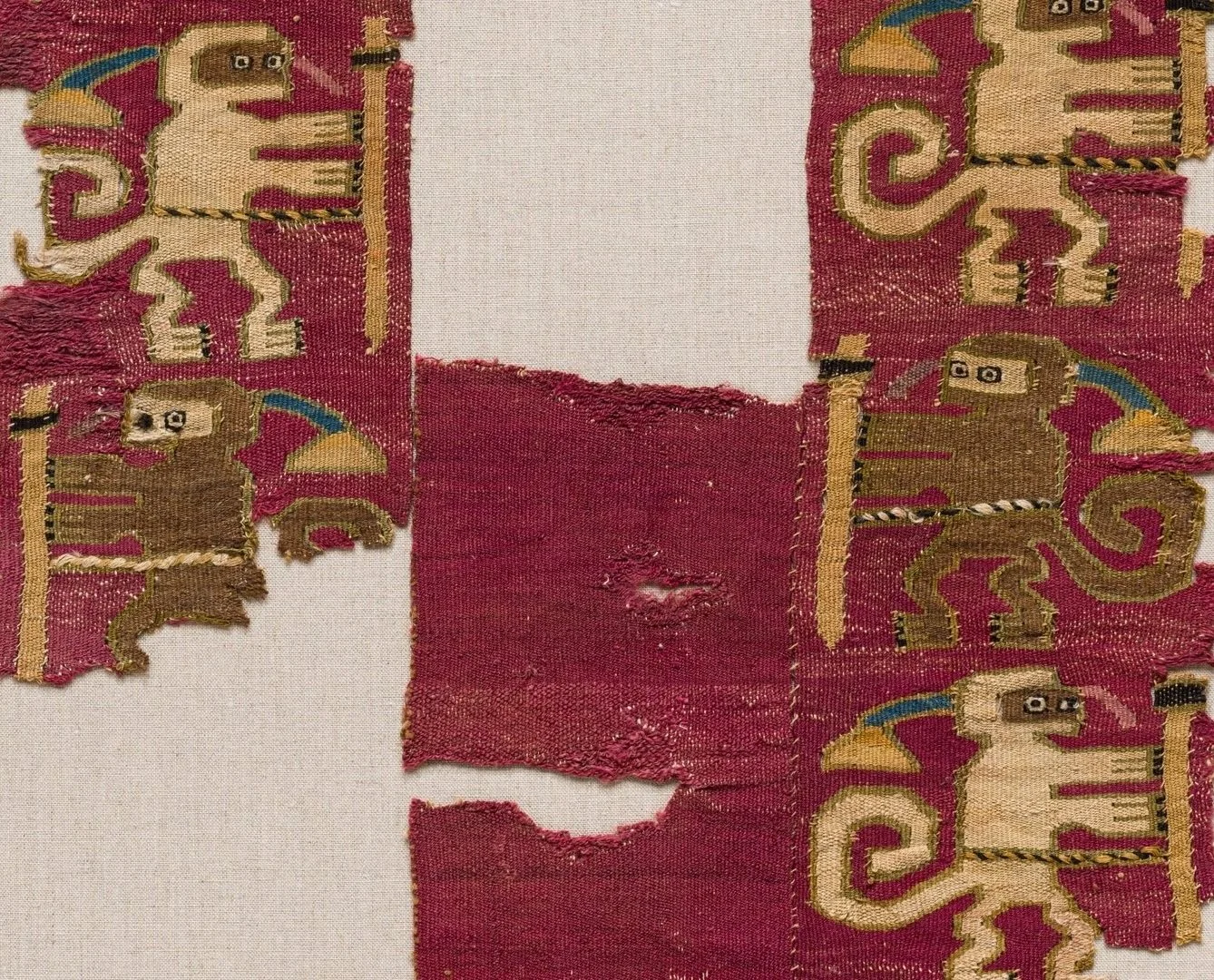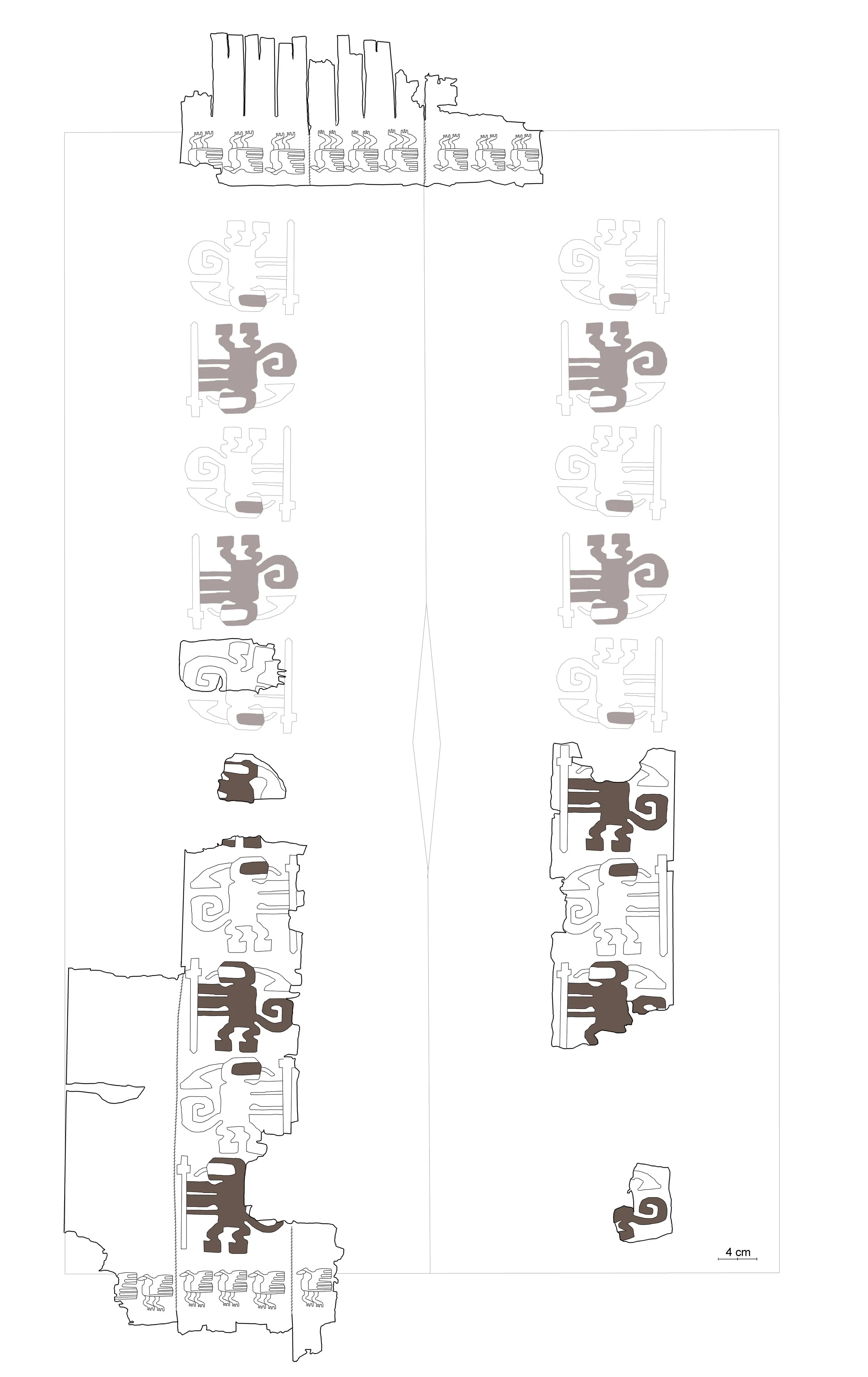
“Tapestry with Monkeys” (upper) and “Tapestry with Birds” (lower), Before treatment
Slit Tapestry Fragments
Peru, Chimú culture
11-15th century
Abegg-Stiftung
Camelid (alpaca or llama) fiber and cotton
These tapestry-woven fragments have cotton warps and camelid wefts. Mounted separately, the fragments are two separate accessioned objects: “Tapestry with Birds” and “Tapestry with Monkeys,” which actually is comprised of five fragments. Both objects have a red ground and are constructed of thin panels seamed together. “Tapestry with Monkeys” has a border decorated with a horizontal band of birds and rectangular fringe-like tabs. This patterning and construction matches that seen on “Tapestry with Birds,” except the birds face in the opposite direction. Both objects were previously treated and stitched mounted to a padded board.
Condition Before Treatment
The textiles were in fair structural condition, with distortions and scattered losses, primarily in the warp, and fair aesthetic condition due to the presence of previous repairs. “Tapestry with Monkey” has numerous losses, and much of the weft around the perimeter of the fragments was unsupported. Additionally, the five fragments that comprise the piece were overlapping, resulting in distortions and an inaccurate representation of the textile. “Tapestry with Birds” also has losses in the warp and has evidence of pest grazing in the weft. It is brittle, and two areas of loss had been visually compensated using a cotton underlay.
Mapping Monkeys
Once the textile was removed from the mount, the individual fragments used to create the composition were visible. It became clear that pieces of monkeys had been overlapped to create a full image. In some areas, this was more successful than others, but none of these were accurately positioned.
Fragment 5 in the diagram raised the most questions. It is a white monkey tail but had been used to complete a brown monkey. It faces in the opposite direction of the other white monkeys, suggesting this may have been part of a textile in which the pattern was reversed along a central axis.
Diagram of fragments from “Tapestry with Monkeys”
Possible configuration of all fragments if from a tunic
Considering Context
The fragment that portrays a white monkey facing in the opposite direction of the other white monkeys, as well as the fact that the birds on “Tapestry with Birds” face in the opposite direction of those on “Tapestry with Monkeys”, suggest that all of these fragments were once part of a tunic or two-sided garment, in which the imagery is reversed on the two sides. Narrow strips, such as those used to create these textiles, were commonly used in tunic construction.
To visualize how this construction may have appeared, a hypothetical map was created. This is purely conjecture based on the pattern, dimensions, and construction of the extant fragments. Nevertheless, it but allows the fragments to be considered in a larger context.
Condition After Treatment
The fragments are now in improved structural and aesthetic condition. All previous interventions were reversed, and fragile and damaged areas are now stabilized using nylon net. “Tapestry with Monkeys” and “Tapestry with Birds” are now pressure mounted together in a legible configuration on a padded board for temporary display. The anomalous fragment in “Tapestry with Monkeys” has not been mounted due to interpretation concerns. However, all fragments will be reunited in storage following their 2022 exhibit.
“Tapestry with Birds” (upper) and “Tapestry with Monkeys (lower), After treatment
Images courtesy and copyright of the Abegg-Stiftung




